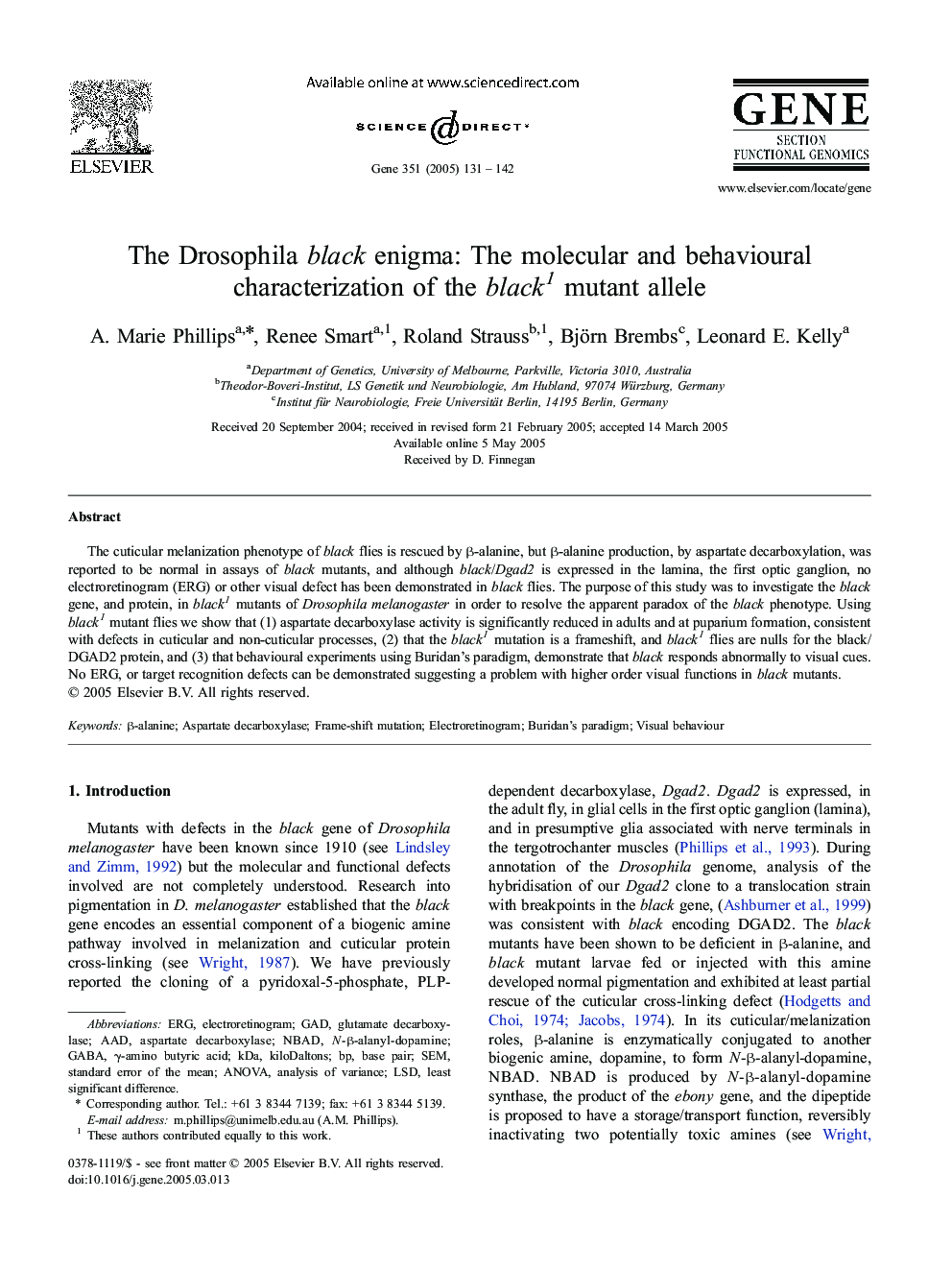| Article ID | Journal | Published Year | Pages | File Type |
|---|---|---|---|---|
| 9127078 | Gene | 2005 | 12 Pages |
Abstract
The cuticular melanization phenotype of black flies is rescued by β-alanine, but β-alanine production, by aspartate decarboxylation, was reported to be normal in assays of black mutants, and although black/Dgad2 is expressed in the lamina, the first optic ganglion, no electroretinogram (ERG) or other visual defect has been demonstrated in black flies. The purpose of this study was to investigate the black gene, and protein, in black1 mutants of Drosophila melanogaster in order to resolve the apparent paradox of the black phenotype. Using black1 mutant flies we show that (1) aspartate decarboxylase activity is significantly reduced in adults and at puparium formation, consistent with defects in cuticular and non-cuticular processes, (2) that the black1 mutation is a frameshift, and black1 flies are nulls for the black/DGAD2 protein, and (3) that behavioural experiments using Buridan's paradigm, demonstrate that black responds abnormally to visual cues. No ERG, or target recognition defects can be demonstrated suggesting a problem with higher order visual functions in black mutants.
Keywords
Related Topics
Life Sciences
Biochemistry, Genetics and Molecular Biology
Genetics
Authors
A. Marie Phillips, Renee Smart, Roland Strauss, Björn Brembs, Leonard E. Kelly,
